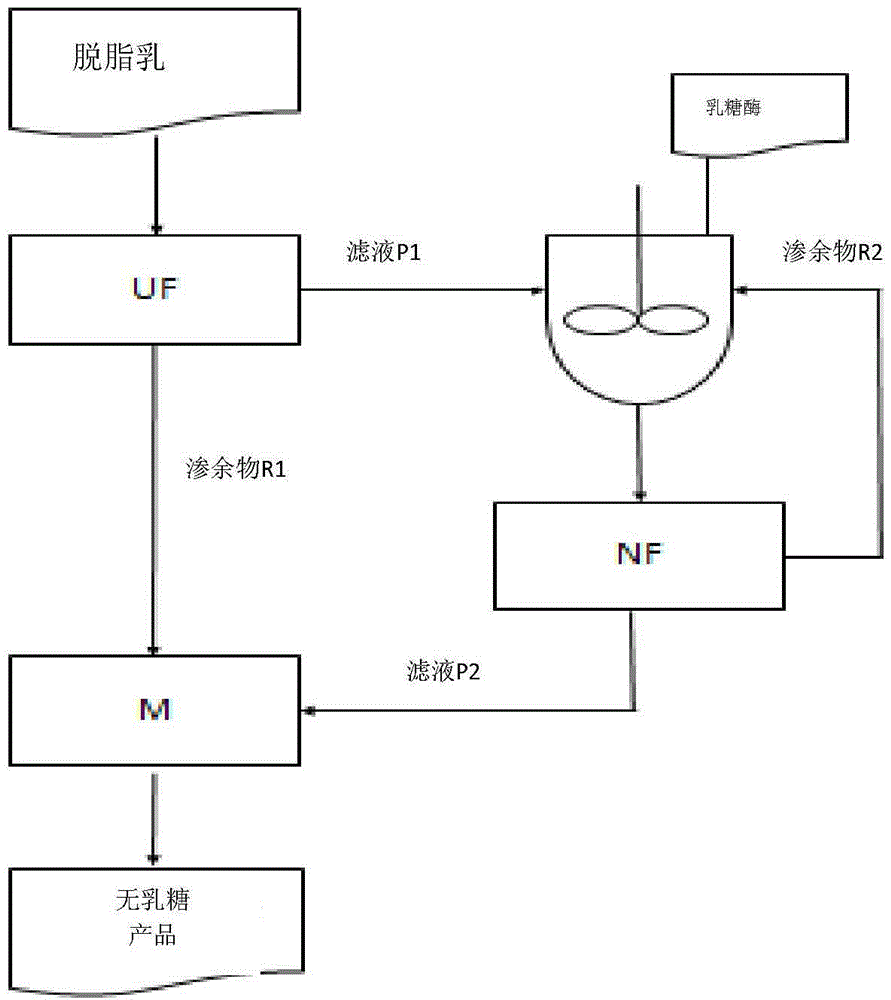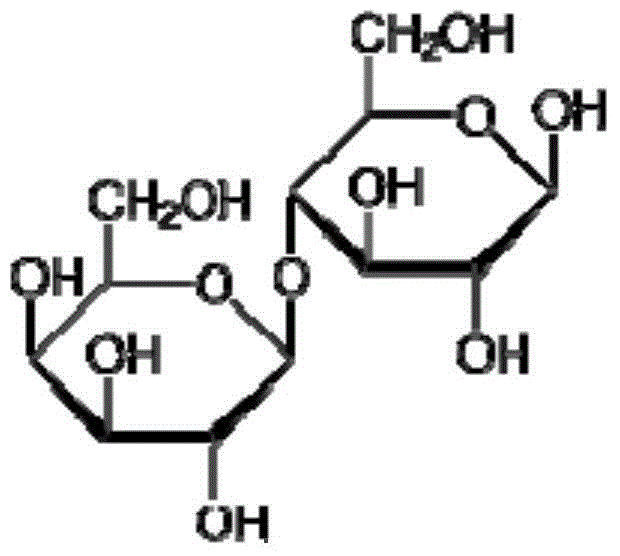Lactose-Free Milk Products
A dairy product, lactose-free technology, applied in the direction of dairy products, other dairy products, milk preparations, etc.
- Summary
- Abstract
- Description
- Claims
- Application Information
AI Technical Summary
Problems solved by technology
Method used
Image
Examples
Embodiment 1
[0045]The skim milk was cooled to 15° C. and passed continuously at a rate of 100 l / h through a UF-plant equipped with a spiral membrane (separation limit 20,000 Daltons). The retentate R1 obtained here is directed to a collection mixing vessel, while the lactose-containing filtrate P1 is pumped into a continuously operated stirred vessel with a volume of 100 l and mixed with a quantity of lactase so that the concentration reaches 200000 FCCunits / kg lactose. The mixture was adjusted to pH=6 and circulated through the NF-device (ceramic membrane, separation limit 1000 Daltons) at 25°C. Here the lactose-free filtrate P1 is introduced into a mixing vessel and mixed with the retentate R1. The retentate R2, which contains unreacted lactose as well as enzyme, is led back to the enzyme reactor again. The final product in the collection container has a lactose concentration of less than 0.1% by weight and is free of enzymes and enzymatic breakdown products.
Embodiment 2
[0047] At a temperature of 30° C., the skim milk is passed continuously at a rate of 120 l / h through a UF-plant equipped with a spiral membrane (separation limit 15.000 Daltons). The retentate R1 obtained here is directed to the collection mixing vessel, while the lactose-containing filtrate P1 is pumped into a continuously operated stirred vessel with a volume of 100 l and mixed with a quantity of lactase so that the concentration reaches 200000 FCC units / kg lactose . The mixture was adjusted to pH=6 and circulated through the NF-device (ceramic membrane, separation limit 1.000 Dalton) at 25°C. Here the lactose-free filtrate P1 is introduced into a mixing vessel and mixed with the retentate R1. The retentate R2, which contains unreacted lactose as well as enzyme, is led back to the enzyme reactor again. The final product in the collection container has a lactose concentration of less than 0.1% by weight and is free of enzymes and enzymatic breakdown products.
PUM
 Login to View More
Login to View More Abstract
Description
Claims
Application Information
 Login to View More
Login to View More - R&D
- Intellectual Property
- Life Sciences
- Materials
- Tech Scout
- Unparalleled Data Quality
- Higher Quality Content
- 60% Fewer Hallucinations
Browse by: Latest US Patents, China's latest patents, Technical Efficacy Thesaurus, Application Domain, Technology Topic, Popular Technical Reports.
© 2025 PatSnap. All rights reserved.Legal|Privacy policy|Modern Slavery Act Transparency Statement|Sitemap|About US| Contact US: help@patsnap.com


